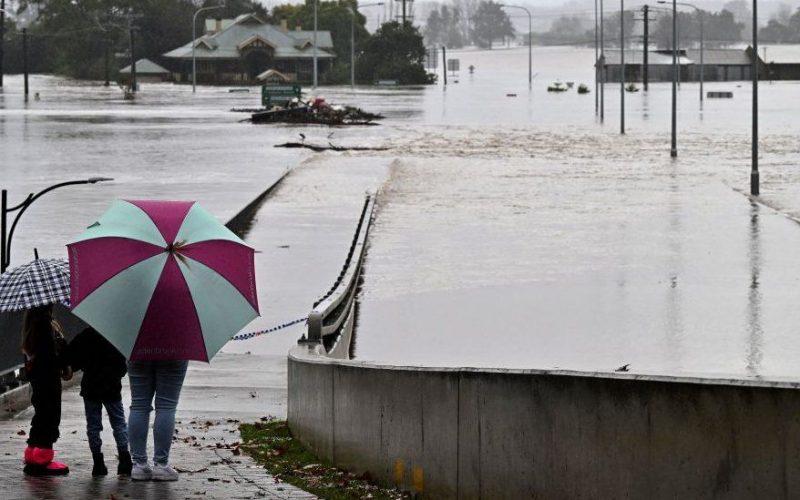Floods have struck Australia’s largest city for the third time this year, prompting the evacuation of over 50,000 residents.
Sydney has gotten the equivalent of eight months of rain in four days. The roads are impassable, some homes are submerged, and hundreds are without electricity. This year, widespread flooding in Australia, caused by a La Nia weather pattern, has killed more than twenty people, the most in New South Wales (NSW).
Greater Sydney has issued more than 100 evacuation orders in response to the present disaster. People in another 50 localities have been urged to evacuate due to the flooding of several major rivers. Also experiencing severe weather are the adjacent Hunter and Illawarra districts.
The Bureau of Meteorology reports that some areas of New South Wales have received 800mm of rain in four days, over a third more than Greater London receives in an ordinary year.
On Tuesday, the rain is anticipated to decrease in Sydney, but gale-force winds are also predicted, posing a danger of downed trees and powerlines.
“The situation is far from ended,” said Stephanie Cooke, minister of emergency services for New South Wales.
Authorities ask locals to obey evacuation orders after rescuers were dispatched two days ago to evacuate individuals.
Many communities are experiencing their third flood of the year.
Tyler Cassel stated that neighbours were fed up with the ongoing threat to their houses and lives after evacuating his girlfriend from their residence by kayak.
The year before he moved into his home in the Sydney suburb of Windsor, he was told that severe flood disasters occurred “once every 25 years, 50 years, or whatever it was.”
According to the Australian Broadcasting Corporation, “it is now 2022’s third,” he stated.
“We are now specialists in this field… you are living dangerously close to the brink.”
According to experts, climate warming and the La Nia weather phenomena have exacerbated the flooding crisis. When strong winds drive the warm surface waters of the Pacific away from South America and toward Indonesia, a La Nia forms. In their place, waters with a lower temperature rise to the surface.
La Nia increases the risk of rain, cyclones, and colder daytime temperatures in Australia.
Image Source: GETTY IMAGES




